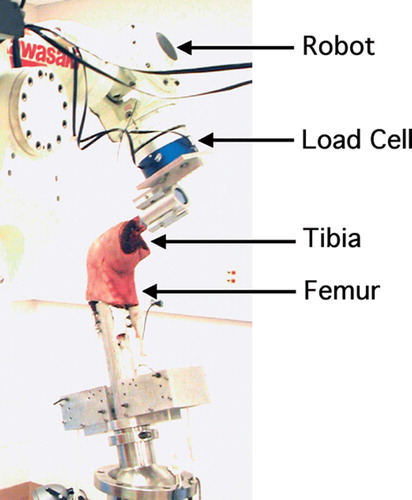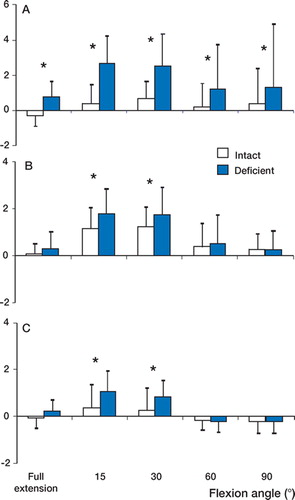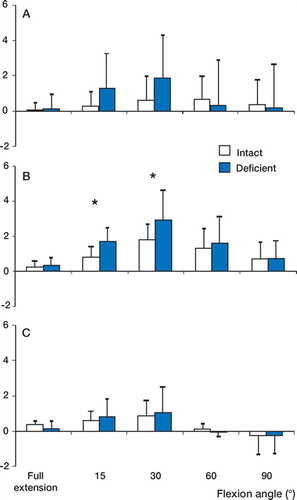Figures & data
Figure 1. The knee specimens were tested on the robotic testing system. Anterior tibial loads were applied and muscle loads were simulated using a system of ropes and pulleys.

Figure 2. (A) After ACL deficiency, medial tibial translation (denoted by positive values in the graphs) increased at all flexion angles under the anterior tibial load. (B) Under the isolated quadriceps load, medial translation increased at 15° and 30°. (C) Under the combined quadriceps and hamstring load, medial translation increased at 15° and 30°. (* p < 0.05).

Figure 3. (A) After ACL deficiency, no differences in varusvalgus rotation were observed under the anterior tibial load. (B) Under the isolated quadriceps load, valgus rotation (denoted by positive values in the graphs) increased at 15°. (C) No differences in varus-valgus rotation were observed under the combined quadriceps and hamstrings load. (* p < 0.05).
